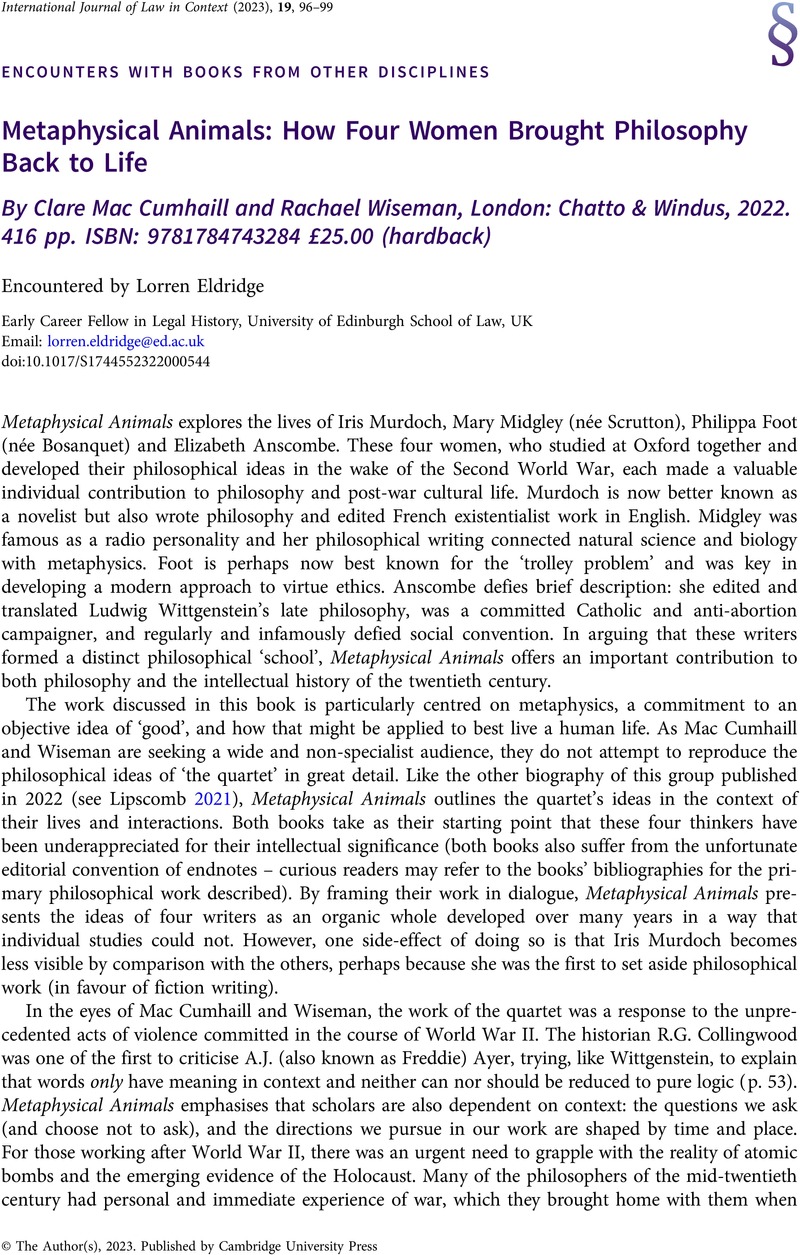No CrossRef data available.
Article contents
Metaphysical Animals: How Four Women Brought Philosophy Back to Life By Clare Mac Cumhaill and Rachael Wiseman, London: Chatto & Windus, 2022. 416 pp. ISBN: 9781784743284 £25.00 (hardback)
Review products
Metaphysical Animals: How Four Women Brought Philosophy Back to Life By Clare Mac Cumhaill and Rachael Wiseman, London: Chatto & Windus, 2022. 416 pp. ISBN: 9781784743284 £25.00 (hardback)
Published online by Cambridge University Press: 25 January 2023
Abstract
An abstract is not available for this content so a preview has been provided. Please use the Get access link above for information on how to access this content.

- Type
- Encounters with Books from Other Disciplines
- Information
- International Journal of Law in Context , Volume 19 , Special Issue 1: Algorithmic Law in Context , March 2023 , pp. 96 - 99
- Copyright
- Copyright © The Author(s), 2023. Published by Cambridge University Press
References
Duve, T (2020) What is Global Legal History?. Comparative Legal History 8, 73–115.CrossRefGoogle Scholar
Eldridge, L (2021) Gone and Forgotten: Vinogradoff's Historical Jurisprudence. Legal Studies 41, 194–213.CrossRefGoogle Scholar
Lipscomb, BJ (2021) The Women Are Up to Something. Oxford: Oxford University Press.CrossRefGoogle Scholar
Tate, JC, Reinaldo, JLL, and Botero-Bernal, A (eds) (2019) Global Legal History: A Comparative Law Perspective. London: Routledge.Google Scholar


